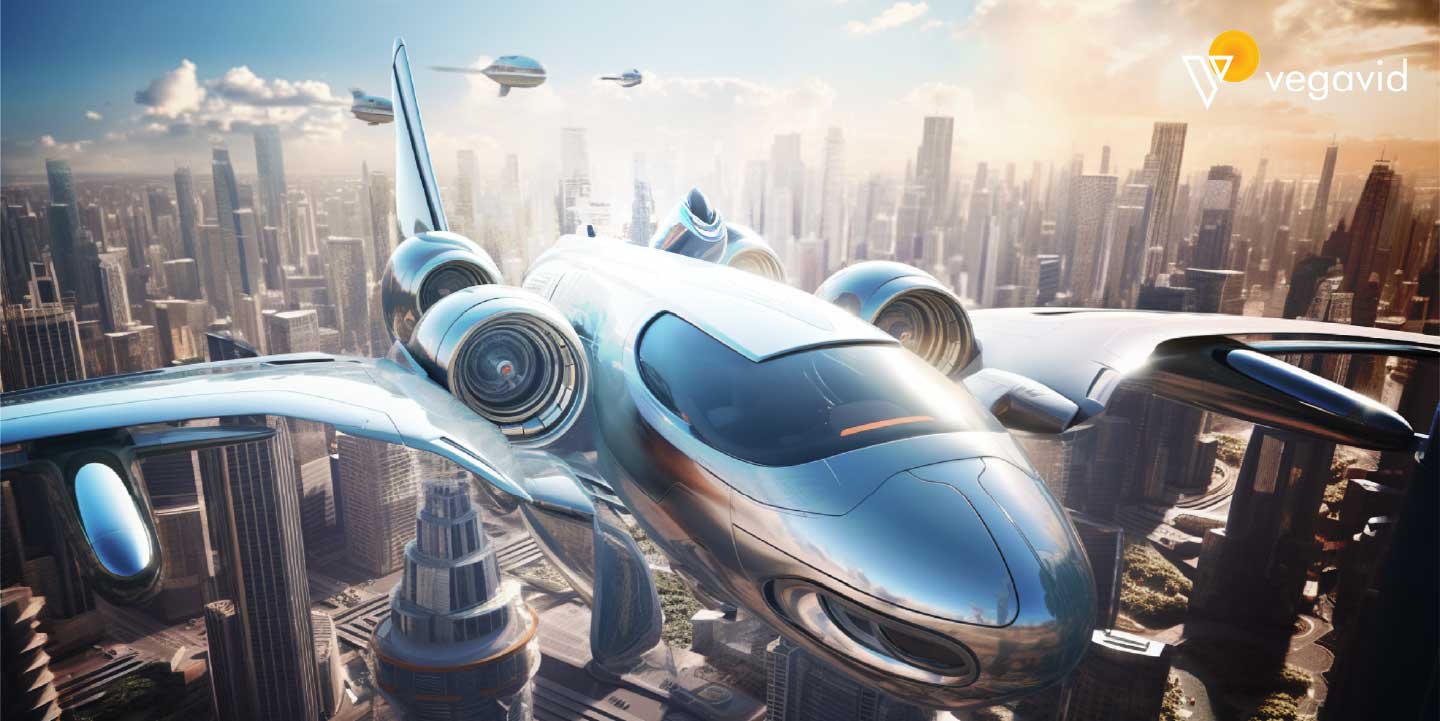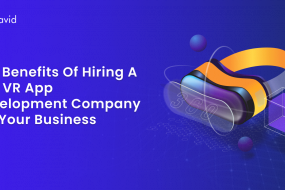
As technology continues improving incredibly, new opportunities are emerging for industries like aerospace. The concept of the Metaverse in aerospace, an immersive virtual world, has captured imaginations across many fields. Exploring how aerospace could benefit provides an optimistic outlook.
The aerospace industry has always been at the forefront of technological innovation, pushing the boundaries of human exploration and travel. In recent years, the industry has set its sights on the metaverse, a virtual, interconnected space where the physical and digital worlds converge. This integration promises to open up a world of exciting possibilities for aerospace.
Introducing the metaverse to the aerospace industry brings with it transformative potential. It offers a new dimension for research, design, training, and collaboration, all critical components of aerospace advancement. In the metaverse, aerospace engineers can simulate and analyze complex systems, from aircraft designs to propulsion systems, in a highly immersive and interactive environment. It facilitates faster prototyping and innovation.
Moreover, the Metaverse in aerospace enhances training and collaboration in the aerospace sector. Astronauts can engage in realistic simulations, practicing complex tasks and scenarios, while engineers and teams across the globe can collaborate on projects seamlessly.
As the Metaverse in aerospace continues evolving, it is set to revolutionize aerospace education, research, design, and commercial space travel. The possibilities are boundless, allowing the industry to leap forward in unimaginable ways.
In this article, we’ll delve into how the metaverse reshapes the aerospace industry, from cutting-edge training simulations to the collaborative design of next-generation spacecraft. This transformation can accelerate progress and open up new frontiers in aerospace exploration.
Potential of the Metaverse in Aerospace
The metaverse has great potential to change how the aerospace industry designs, tests, and manufactures airplanes. In the metaverse, engineers can create virtual 3D models and simulate how planes will function in different conditions before building prototypes. Some of the potential of metaverse in this industry are as follows-
Advanced Training Simulations
Piloting aircraft, functioning in zero-gravity environments, and performing intricate repairs require extensive hands-on practice. The Metaverse in aerospace could enhance simulation quality through photorealistic 3D rendering and virtual reality. Trainees gain realistic experiences without safety risks. Interactive troubleshooting builds skills efficiently.
Streamlined Design Processes
Building physical prototypes is time-consuming and costly. In the Metaverse in aerospace, engineers can quickly test component interfaces, aerodynamic properties, and structural tolerancing through fully dynamic digital twin modeling before a single part gets machined. Iterating blueprints becomes seamlessly integrated into production planning.
Collaborating in Real-Time
With all work occurring virtually, cross-disciplinary teams facing complex problems could interact simultaneously inside shared Metaverse in aerospace workspaces. Rather than emails or calls, experts come together in an environment tailored precisely for inspection, discussion, and demonstration. Projects benefit from streamlined coordination.
Revolutionizing Maintenance
Performing repairs in cramped, hard-to-reach aircraft areas presents serious challenges. Using mixed-reality headsets, technicians enter an augmented Metaverse in aerospace overlay, directly observing the aircraft. Customized virtual manuals guide every step, while remote support sees live video to assist as needed. Potential safety and scheduling improvements abound.
Transforming the Customer Experience
Customers evaluating plane purchases today rely on specifications sheets or attending static air shows. In the future, Metaverse in aerospace showrooms could offer photorealistic virtual test flights, cabin walkthroughs, and detailed component demonstrations. Sales conversations become more engaging as virtual products are experienced firsthand.
In summary, while the Metaverse in the aerospace concept remains in development, early applications suggest aerospace has much to gain through increased collaboration capabilities, optimized processes, cost reductions, and new service pathways. Virtual worlds may transform this industry for tomorrow’s safer, brighter skies. Continued progress offers unlimited potential.
Potential Challenges
While the aerospace industry eagerly embraces the Metaverse for its transformative potential, it is not without its challenges. Adopting this virtual realm involves several hurdles that the industry must navigate. Security is a top concern, as sensitive aerospace data must be safeguarded in this interconnected space. The cost of implementing metaverse technologies and training personnel is another challenge. Additionally, ensuring seamless integration between physical and digital environments demands careful planning. Ethical concerns regarding privacy and data usage need to be addressed as well. In this introduction, we’ll explore these potential challenges the aerospace industry may encounter as it ventures into the Metaverse, highlighting the importance of addressing these issues for a successful transition.
Here are a few potential challenges the aerospace industry could face in adopting the Metaverse:
- Technology limitations – Current VR/AR/3D technologies may not be advanced enough to simulate complex aerospace systems and environments accurately.
- Cost and resource investment – Designing and developing robust metaverse solutions requires significant financial and personnel commitments that not all aerospace companies can make.
- Interoperability issues – Getting different companies’ metaverse platforms, data formats, simulations, etc. to interconnect seamlessly will be challenging.
- Security and safety concerns – Ensuring sensitive IP and operational data in the Metaverse are protected from cyber threats or potential software/hardware failures.
- Change management hurdles – Transforming entrenched processes, workflows, and culture could only meet resistance with vital change leadership programs.
- Regulation and certification – Regulators may need to establish new guidelines for how metaverse activities comply with existing aerospace standards and requirements.
- Lack of measurable ROI – Proving clear cost savings and performance impacts upfront to justify metaverse expenditures vs traditional methods.
- Connectivity dependence – Robust and reliable networking/computing infrastructure would be critical for mission-critical aerospace uses of the Metaverse.
- User experience limitations – Current immersive tech may not allow natural, fatigue-free user experiences required for intensive aerospace tasks.
Careful planning will be needed to smoothly maneuver around these challenges as the metaverse potential is pursued.
Examples of Aerospace Companies Successfully Adopting The Metaverse
As the aerospace industry explores the potential of the metaverse, several pioneering companies have already made significant strides in adopting this transformative technology. These examples offer a glimpse into the promising future of the aerospace sector within the metaverse; from using virtual environments for astronaut training and simulations to collaborative design processes, innovative aerospace companies harness the metaverse’s power to enhance research, development, and training. In this introduction, we’ll delve into a few notable examples of aerospace companies successfully integrating the metaverse into their operations, demonstrating this cutting-edge technology’s tangible benefits and innovative applications.
There are a few early examples of aerospace companies starting to adopt metaverse technologies:
- Boeing has experimented with HoloLens AR to assist maintenance technicians and developed a concept for remote piloting using VR headsets.
- Airbus is researching using VR/AR for manufacturing processes like wiring inspections and assembly previews. They’re also developing metaverse-enabled sales tools.
- Lockheed Martin partnered with Anthropic to build AI simulations for spacecraft docking that trainees can practice virtually.
- Collins Aerospace launched an employee “metaverse” on the Spatial platform to foster remote collaboration.
- During the conceptual phase, GE Aviation leverages VR cave environments to visualize 3D jet engine designs.
- SpaceX utilizes game engine-based VR simulations for astronaut training missions on their Dragon and Starship vehicles.
- NASA is working on digital twin initiatives to create virtual replicas of spacecraft, stations, launch vehicles, and more using cloud/XR tech.
While still in the early stages, these companies are starting to validate use cases and work through challenges. Over time, metaverse integration into aerospace may become more widespread as benefits materialize.
Conclusion
Integrating the metaverse into the aerospace industry represents a revolutionary step toward achieving new heights in innovation, collaboration, and exploration. This digital realm offers a captivating glimpse of the future, where the boundaries between the physical and digital worlds blur, and the aerospace industry stands at the forefront of this transformation.
The metaverse’s potential for the aerospace sector is nothing short of extraordinary. From immersive astronaut training simulations that simulate the challenges of space travel to collaborative design and research in highly detailed virtual environments, this technology is reshaping how aerospace professionals work, learn, and create. It accelerates the development of cutting-edge technologies, streamlines design processes, and enhances the precision and safety of aerospace operations.
The metaverse brings heightened connectivity and global collaboration, enabling researchers, engineers, and astronauts to work seamlessly across vast distances. This interconnectedness bolsters efficiency and paves the way for more diverse perspectives and a more inclusive workforce.
However, embracing the Metaverse in the aerospace industry has its challenges. Security, privacy, and the substantial financial investments required for implementation and personnel training remain essential considerations. Addressing these challenges is crucial to ensure a smooth transition and maximize the metaverse’s transformative potential.
As we navigate this digital frontier, it’s clear that the metaverse is not a futuristic concept but a present reality. Aerospace companies are actively adopting and exploring the myriad possibilities it offers, from virtual astronaut training to collaborative design projects. With each successful integration, the aerospace industry moves closer to unlocking a future where aerospace innovation knows no bounds.
The Metaverse in aerospace promises to usher in a new era of aerospace exploration with enhanced research, safer travel, and greater interconnectedness among industry professionals. It’s a testament to the industry’s unwavering commitment to pushing the boundaries of what’s possible, bridging the realms of the tangible and the virtual, and soaring to ever greater heights. As the metaverse continues to evolve, the aerospace industry is poised to lead the way, setting the stage for incredible innovations and expanding the horizons of human exploration and understanding.











